#futuremobility
Text
The Role Of Automotive Connectors

In today’s automotive industry, innovation is not just confined to engine power or design aesthetics; it extends to the very infrastructure that connects the various components of a vehicle. Automotive connectors, often overlooked but essential components, play a pivotal role in ensuring seamless communication and functionality within modern vehicles. This article delves into the significance of automotive connectors, their evolving role in vehicle design, and the latest advancements shaping the automotive connectivity landscape.
Understanding Automotive Connectors
They are electrical components used to establish secure and reliable connections between different electronic systems and components within a vehicle. These connectors facilitate the transmission of power, signals, and data between various vehicle systems, including the engine, transmission, sensors, infotainment systems, and safety features.
Importance of Automotive Connectors

Reliable Electrical Connections: Automotive connectors are designed to withstand the harsh operating conditions encountered in vehicles, including temperature fluctuations, vibrations, moisture, and electromagnetic interference. Their robust construction ensures reliable electrical connections, minimizing the risk of signal loss, malfunction, or electrical failures.
Enhanced Vehicle Performance: By providing a standardized interface for connecting electrical components, connectors contribute to the overall performance and efficiency of modern vehicles. They enable seamless integration of advanced features such as advanced driver-assistance systems (ADAS), electrified powertrains, infotainment systems, and connectivity services, enhancing the driving experience and safety features.
Flexibility and Scalability: Automotive connectors offer flexibility and scalability in vehicle design and manufacturing, allowing automakers to customize and optimize electrical systems to meet specific requirements. Modular connector designs enable easy assembly, maintenance, and future upgrades, reducing production costs and time-to-market for new vehicle models.
Diagnostic and Maintenance Capabilities: Automotive connectors play a crucial role in vehicle diagnostics and maintenance, enabling technicians to access and analyze data from onboard sensors, control units, and electronic systems. Diagnostic connectors provide a standardized interface for connecting diagnostic tools and software, facilitating troubleshooting, fault detection, and repair procedures.
Evolution of Automotive Connectivity
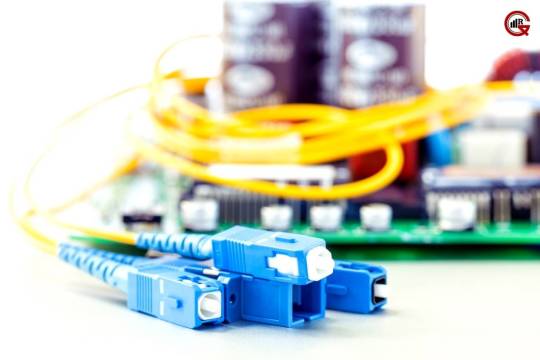
Over the years, automotive connectivity has evolved significantly, driven by advancements in technology, consumer demand for connected features, and regulatory requirements. The automotive industry is witnessing a shift towards electrification, automation, and digitalization, driving the demand for more sophisticated and high-performance connectors.
High-Speed Data Connectivity: With the proliferation of connected vehicles and in-vehicle electronics, connectors are increasingly required to support high-speed data transmission for applications such as in-car entertainment, navigation, telematics, and vehicle-to-vehicle (V2V) communication. High-speed connectors such as USB, HDMI, Ethernet, and CAN (Controller Area Network) are becoming standard features in modern vehicles, enabling seamless connectivity and data exchange.
Electrification and Hybridization: The transition towards electric and hybrid vehicles necessitates the development of specialized connectors capable of handling high-voltage power distribution, battery management, and charging systems. High-voltage connectors, including HVIL (High-Voltage Interlock Loop) connectors, are designed to ensure safety and reliability in electrified vehicles, facilitating efficient power transfer and management.
Miniaturization and Lightweight Design: As vehicle electronics become more complex and space-constrained, there is a growing demand for miniaturized and lightweight connectors that can accommodate densely packed electronic systems without compromising performance or reliability. Miniaturized connectors offer significant advantages in terms of space savings, weight reduction, and improved vehicle aerodynamics, contributing to fuel efficiency and range in electric vehicles.
Sealed and Waterproof Connectors: With the increasing emphasis on vehicle durability and reliability, automotive connectors are being designed with enhanced sealing and waterproofing features to withstand harsh environmental conditions, including exposure to water, dust, dirt, and corrosion. Sealed connectors ensure reliable operation in outdoor and off-road applications, such as commercial vehicles, agricultural machinery, and recreational vehicles.
Future Trends and Innovations

Looking ahead, several trends and innovations are shaping the future of automotive connectivity and connector technology.
Wireless Connectivity: The emergence of wireless connectivity technologies such as Bluetooth, Wi-Fi, and 5G is revolutionizing in-car connectivity, enabling seamless integration of smartphones, wearable devices, and IoT (Internet of Things) devices with vehicle infotainment systems and telematics platforms. Wireless connectors and antennas are becoming increasingly prevalent in modern vehicles, offering greater flexibility, convenience, and accessibility for passengers.
Smart and Adaptive Connectors: Smart connectors equipped with embedded sensors, microcontrollers, and communication protocols enable real-time monitoring, diagnostics, and predictive maintenance of vehicle electrical systems. Adaptive connectors can dynamically adjust their configuration and performance based on changing operating conditions, optimizing energy efficiency, and reliability in diverse environments.
Integration with AI and Edge Computing: The integration of artificial intelligence (AI) and edge computing technologies into automotive connectors enables advanced features such as autonomous driving, predictive analytics, and personalized vehicle experiences. AI-powered connectors can analyze sensor data, detect patterns, and make intelligent decisions in real-time, enhancing vehicle safety, performance, and user satisfaction.
Sustainable Materials and Manufacturing: With growing concerns about environmental sustainability and resource conservation, automotive connector manufacturers are exploring alternative materials and manufacturing processes that minimize environmental impact and promote circular economy principles. Sustainable connectors made from recycled materials, bio-based polymers, and eco-friendly coatings are gaining traction in the automotive industry, aligning with the broader trend towards eco-friendly mobility solutions.
Conclusion
Automotive connectors are the unsung heroes of modern vehicles, enabling seamless communication, functionality, and connectivity between electronic systems and components. As the automotive industry continues to evolve towards electrification, automation, and digitalization, the role of automotive connectors will become increasingly critical in shaping the future of mobility. By embracing advancements in connector technology, automakers can enhance vehicle performance, safety, and user experience while addressing evolving consumer demands and regulatory requirements. As vehicles become more connected, intelligent, and sustainable, automotive connectors will remain at the forefront of innovation, driving the next generation of automotive connectivity solutions.
#AutomotiveConnectors#VehicleConnectivity#FutureMobility#SmartConnectors#ElectrificationTrends#InnovationInAutomotive
0 notes
Text

#AutomotiveIndustry#TireTechnology#Innovation#FutureMobility#SustainableTransport#SmartTires#AdvancedMaterials#TireDesign#GlobalMarket#AutomotiveInnovation#GreenTransport#Efficiency#SafetyFeatures#TireManufacturing#SmartMobility#TirePerformance
0 notes
Text

𝐄𝐥𝐞𝐜𝐭𝐫𝐢𝐜 𝐕𝐞𝐡𝐢𝐜𝐥𝐞 (𝐄𝐕) 𝐂𝐡𝐚𝐫𝐠𝐢𝐧𝐠 𝐌𝐚𝐫𝐤𝐞𝐭 𝐔𝐥𝐭𝐢𝐦𝐚𝐭𝐞 𝐆𝐮𝐢𝐝𝐞
𝑮𝒆𝒕 𝒂 𝒇𝒓𝒆𝒆 𝒔𝒂𝒎𝒑𝒍𝒆 𝑷𝑫𝑭 @ https://www.nextmsc.com/electric-vehicle-charging-market/request-sample?utm_source=debashree_linkedin&utm_medium=debashree_ip&utm_campaign=debashree_ev_charging&utm_id=debashree_apr&utm_term=debashree_ip&utm_content=debashree_ip
The 𝐄𝐥𝐞𝐜𝐭𝐫𝐢𝐜 𝐕𝐞𝐡𝐢𝐜𝐥𝐞 (𝐄𝐕) 𝐂𝐡𝐚𝐫𝐠𝐢𝐧𝐠 𝐌𝐚𝐫𝐤𝐞𝐭 is poised for remarkable growth to a staggering 𝐔𝐒𝐃 𝟏𝟐𝟖.𝟏𝟑 𝐛𝐢𝐥𝐥𝐢𝐨𝐧 by 2030. This remarkable trajectory represents a robust 𝐂𝐀𝐆𝐑 𝐨𝐟 𝟐𝟖.𝟐%by 2030.
The surge in demand for charging infrastructure mirrors the widespread acceptance and increasing utilization of electric vehicles globally. Governments around the world are stepping up efforts to incentivize the adoption of electric vehicles, driven by the urgent need to meet fuel consumption limits and curb greenhouse gas emissions.
One of the key challenges in this burgeoning market is the need for standardization of EV charging stations. As the EV market expands, ensuring uniformity in charging infrastructure becomes paramount, especially considering the diverse charging loads and requirements. Standardization efforts will not only streamline operations but also enhance interoperability, fostering a more seamless experience for EV owners.
Access full report @ https://www.nextmsc.com/report/electric-vehicle-charging-market?utm_source=debashree_linkedin&utm_medium=debashree_ip&utm_campaign=debashree_ev_charging&utm_id=debashree_apr&utm_term=debashree_ip&utm_content=debashree_ip
0 notes
Text
Honda unveils the UNI ONE at @SXSW
Step into the future of personal mobility with Honda at SXSW 2024! Experience the fusion of virtual reality and engineering prowess, as Honda unveils the UNI-ONE – not just a wheelchair, but a hands-free marvel of self-balancing tech. Move in any direction with a shift of your center of gravity.
Experience More at our Instagram.
#hondaunione#unione#selfbalancingwheel#futuremobility#SXSW2024#sxsw#newinventions#digitalworld#innovativeproducts#visionary#wheelchair#techupdates#technologytrends#newtech#friday#breakingnews#faveplus
0 notes
Text
In-Wheel Motors Market to Witness Robust Expansion with CAGR by 2030

The qualitative report published by Exactitude Consultancy research on the “In-Wheel Motors Market offers an in-depth examination of the current trends, latest expansions, conditions, market size, various drivers, limitations, and key players along with their profile details. The In-Wheel Motors market report offers the historical data for 2018 to 2023 and also makes available the forecast data from the year 2024 to 2030 which is based on revenue. With the help of all this information research report helps the Market contributors to expand their market positions. With the benefit of all these explanations, this market research report recommends a business strategy for present market participants to strengthen their role in the market. This report analyzes the impact of the Covid 19 pandemic on the In-Wheel Motors Market from a Global and Regional perspective.
The global in-wheel motors market is expected to grow at 20% CAGR from 2024 to 2030. It is expected to reach above USD 2,741.46 million by 2030 from USD 541 million in 2023.
For The Full Report Click here:
https://exactitudeconsultancy.com/reports/2832/in-wheel-motors-market/
#InWheelMotors#ElectricVehicles#EVTechnology#ElectricDrive#AutomotiveInnovation#ElectricPropulsion#FutureMobility#ElectricDriveSystem#VehicleElectrification#GreenTransportation#AutomotiveEngineering#ElectricPowertrain#InWheelDrive#VehiclePerformance#CleanEnergy#SustainableMobility#ElectricVehicleTechnology#InnovativeTechnology#FutureOfMobility#EcoFriendlyVehicles
0 notes
Text
#bss#beststartupstory#dubaiaerialtaxi#electricaerialtaxi#futuretransportation#innovationindubai#urbanmobility#greentechnology#sustainabletransport#futurecities#dubaitech#smartcitysolutions#aerialtaxiservice#urbanairmobility#dubaiinnovation#electricaviation#futuremobility#dubai2026
0 notes
Text

Hydrogen Integration Strategies
Backward and Forward Hydrogen Integration Strategies
A number of important firms in the hydrogen sector are increasing their market share and status in the value chain by employing both forward and backward integration strategies. Forward integration aims to expand into downstream activities or end-user markets, while backward integration involves acquiring or overseeing the production of inputs or raw materials.
Hydrogen integration strategies are the plans and techniques that individuals, organizations, and governments utilize to successfully incorporate hydrogen into various economic sectors. These strategies seek to capitalize on hydrogen's advantages as a clean and flexible energy source to address energy-related problems, reduce carbon emissions, and promote sustainable development. Hydrogen integration strategies encompass a range of activities, including production, storage, transportation, and end applications.
Here are some examples of companies implementing these strategies:
Backward Integration:
Plug Power: Plug Power, a well-known provider of hydrogen fuel cell solutions, is taking a step toward backward integration with the acquisition of United Hydrogen Group Inc. This acquisition has allowed Plug Power to vertically integrate into the hydrogen production process. Since United Hydrogen operates a hydrogen production facility that uses steam methane reforming and electrolysis, Plug Power has been able to secure a committed supply of hydrogen for its fuel cell devices.
Air Liquide: As part of a backward integration initiative, Air Liquide, a global supplier of industrial gas, has made investments in hydrogen production technologies. They have developed unique electrolysis techniques that use renewable energy sources, such as proton exchange membranes and alkaline electrolyzers, to produce hydrogen from water (PEM). Air Liquide provides a sustainable and secure hydrogen supply for a variety of applications in industrial, energy, and mobility through vertical integration with hydrogen generation.
Forward Integration:
Hyundai Motor Group: As part of its forward integration plan, major automaker Hyundai is building a full hydrogen ecosystem. In addition to developing hydrogen fuel cell electric vehicles (FCEVs), such as the Hyundai NEXO, the infrastructure for hydrogen is being actively improved. Hyundai has also formed a joint venture called Hyundai Hydrogen Mobility (HHM) to offer fuel cell electric trucks as a service. With its vertical integration into the mobility and transportation industry through HHM, Hyundai is providing a complete zero-emission commercial vehicle solution.
NEL ASA: Forward integration is the main focus of Norwegian hydrogen company NEL ASA's expansion into hydrogen refueling infrastructure. NEL designs, develops, and manufactures hydrogen refueling stations. Since NEL's turnkey solutions make it possible to build hydrogen fuelling networks, the market for hydrogen fuel cell vehicles is expanding. The stations owned by NEL contribute to the advancement of the hydrogen infrastructure by virtue of their extensive deployment.
Hybrid Integration:
Siemens Energy: Siemens Energy is a global energy technology company that uses a hybrid integration approach that blends forward and backward integration. As part of their expanded offering, they now provide hydrogen gas turbine and electrolysis technologies. Siemens Energy can manufacture green hydrogen through their electrolysis technology, and their hydrogen gas turbines facilitate the use of hydrogen as a sustainable energy source. This hybrid integration approach enables Siemens Energy to offer integrated systems for hydrogen production, storage, and power generation.
Linde plc: Production and distribution of hydrogen is being carried out by renowned industrial gas company Linde plc as part of their hybrid integration plan. Linde operates large-scale hydrogen generation plants using a range of processes, such as steam methane reforming. They also have an extensive network of pipelines and other transportation equipment as part of their extensive infrastructure network for transporting hydrogen. Linde is able to provide hydrogen to a range of end users with a stable supply chain because of its hybrid integration.
These instances show how businesses in the hydrogen industry are utilizing forward and backward integration tactics to bolster their market position, maintain supply chain management, and extract value at various points along the value chain. These tactics encourage the use of hydrogen as a clean energy source and aid in the creation of all-encompassing solutions.
Read More-https://www.marketsandmarkets.com/industry-practice/hydrogen/integration-strategies
#FuelCellVsBattery#ClimateChangeSolutions#RenewableEnergyOptions#CleanTransportDebate#HydrogenEconomy#ElectricRevolution#FutureMobility#LowCarbonChoices
0 notes
Text
Exploring the Future of Efficient Transportation | Paragon Universe
youtube
🚗 Join us in exploring the Future of Efficient Transportation at Paragon Universe! Our video takes you on a journey through groundbreaking innovations that are reshaping how we get from A to B. Buckle up for a ride into tomorrow! 🌟
#EfficientTransportation#ParagonUniverse#FutureMobility#InnovationInMotion#SustainableTravel#NextGenVehicles#EcoFriendlyCommute#FutureTech#TransportationInnovations#ExploreTheFuture#GreenTransport#Youtube
0 notes
Photo

Mal ehrlich - was würdest Du mit 180 Milliarden Euro machen? Genau diese Frage stellt sich unter anderem grade Dr. Arno Antlitz. Er verantwortet die Finanzen bei einem der größten Konzerne der Welt, der Volkswagen Group 🙌 Nächste Woche treffe ich ihn wieder, wenn ich in Wolfsburg zum dritten Mal die K-F Convention moderiere. Im exklusiven Live-Interview spreche ich mit dem Volkswagen Konzern Finanzchef 90 Minuten über finanzielle Nachhaltigkeit, die gewaltigen Transformationsprozesse in der Automobilwelt und den Umgang mit Risiken. Es wird auch um internationale Chancen gehen und um neue Konkurrenten für den Konzern. Europas größter Autohersteller plant zwischen 2023 und 2027 insgesamt 180 Milliarden Euro zu investieren – hauptsächlich in Digitalisierung und Elektrifizierung. Gerade in China und Nord-Amerika will der VW-Konzern damit den Anschluss halten. Welche Frage würdest Du Dr. Antlitz stellen? Schreib mir in die Kommentare ➡️ www.maxi-sarwas.de #interview #digitalisierung #euro #china #volkswagen #maxisarwas #moderatorin #automotiveindustry #futuremobility #electromobility #webtv #livestreaming #presenter #host (hier: Munich, Germany) https://www.instagram.com/p/CqOoriRM4xe/?igshid=NGJjMDIxMWI=
#interview#digitalisierung#euro#china#volkswagen#maxisarwas#moderatorin#automotiveindustry#futuremobility#electromobility#webtv#livestreaming#presenter#host
0 notes
Text
Benefits of Electric Scooters | TRiDE Mobility
youtube
Electric Scooters are being used on a large scale due to their many benefits to the customers. Easy convenience is what makes people in the big cities accept it for daily local travel.
Have you switched to electric yet?
0 notes
Text

#QuantumComputing#AutomotiveTech#FutureMobility#Innovation#TechTrends#AI#MachineLearning#QuantumAI#QuantumAdvancements#QuantumInnovation#QuantumTechnology#AutomotiveIndustry#QuantumSolutions#DigitalTransformation
0 notes
Text
instagram
#NationalPollutionControlDay#Awareness#SaveEarthSaveLife#GreenMobility#stoppollution#PollutionFreeIndia#futuremobility#environmentallyconscious#tnrevehicles#Instagram
0 notes
Photo

Geometry in motion #carsfromchina #geelydesign #geelydesignchina #geelyev #ev #electriccar #futuremobility #sustainabilemobility #beautifulbods #indiancardesigner (at Hangzhou, China) https://www.instagram.com/p/ClFiUiQpFgI/?igshid=NGJjMDIxMWI=
#carsfromchina#geelydesign#geelydesignchina#geelyev#ev#electriccar#futuremobility#sustainabilemobility#beautifulbods#indiancardesigner
0 notes
Text
Rivian shares surge as company reveals new EV models, $2.25 billion in co
#Rivian#ElectricVehicles#EVNews#Investing#StockMarket#AutomotiveIndustry#Sustainability#CleanEnergy#CostSavings#FinancialNews#RivianStock#ElectricCars#GreenTechnology#InvestmentOpportunity#BusinessNews#RivianR1T#RivianR1S#EconomicNews#FutureMobility#TumblrDiscussion
0 notes
Text
Congres Barcelona - Day 3
The final day of the Tomorrow.Mobility Congres was significantly more quiet than the other days. Next to that there were an awful lot of people wandering around with wheeled trolley suitcases.
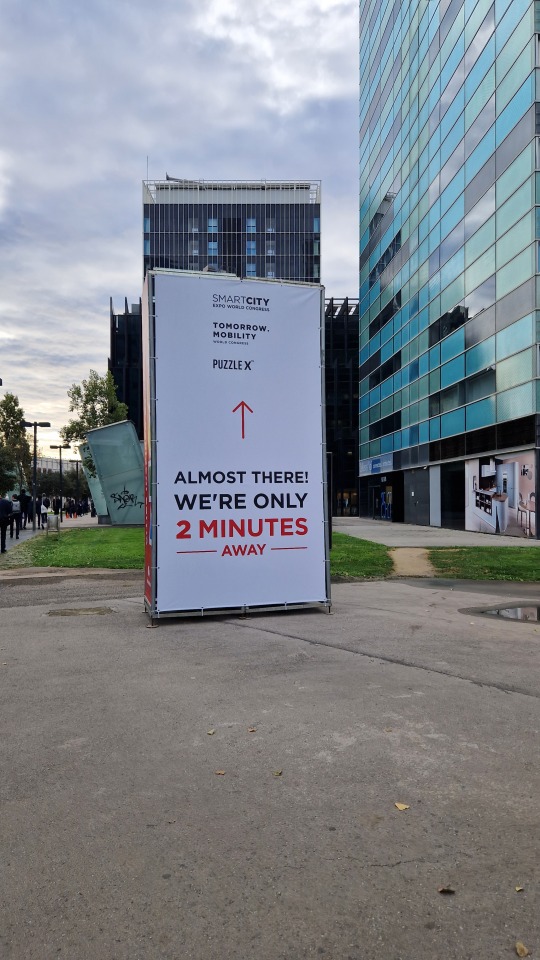
Because I had an early evening flight back to Amsterdam I decided to only go to three lectures on this final day. I therefor had to miss the lecture on Micro-mobility and Road Safety which was scheduled late in the afternoon.
Up In The Air - Is Urban Air Mobility What Cities and Citizens Want?
The first session was quite an important one. It is a topic most cities and municipalities are not heavily engaged with, but of which we know one day it will challenge us. It's about Urban Air Mobility (UAM) which is the container concept for 'drones', 'air taxi's', etc.

There were two speakers from private sector companies, one speaker from the public sector and one speaker from an interest group (the EU Against Aircraft Nuisance).
The private sector speakers were primarily focused on the benefits of UAM to our daily lives. The technology is basically there, it just has to be implemented. Logistics will go much faster than they do today and because the logistics will move from ground to air, it will solve a part of the congestion in urban areas. Especially in remote areas with poor infrastructure, UAM can be a problem solver. UAM is being implemented successfully in parts of Africa where they ship medicine and blood to remote areas in less than an hour which used to take 4 hours to 1 day before, thereby saving lives.

The public sector speaker was wary of the fact that one of the problems for the livability of cities is that streets (on ground level) are now overcrowded with traffic. Why would we want to overcrowd the airspace above us with traffic as well? Besides, part of the livability of a city comes with social contact. Why would you want your coffee being delivered to you by a drone? It would make the streets less social, because no one has the need anymore to go out. The speaker however did point out that in some cases drones can be beneficial. For instance when a facade needs to be checked, in the current situation you need to close off an entire road and put a crane in. In the future you could make use of drones, so you would not need to close off the street anymore.
The speaker from UECNA pointed out that the livability in cities is already under immense pressure due to a lot of different noise sources. She argued that all these UAM are quite noisy so it would only add up to another noise source in the urban areas. Besides that, what would happen at accidents? Normal aircraft occasionally get involved in accidents as well. Therefor nearly all airports are built outside the urban areas. How does UAM - which are basically smaller sized aircraft - fit in these dense urban areas?

The panel concluded that UAM will be inevitable as regulators are usually too slow to react because they lack understanding of the subject. There are some useful applications of UAM as well, even in dense urban areas. But there are a lot of question marks still 'hovering around' (pun intended) the subject. Therefor it would be wise if European local councils would invest in the knowledge of the subject and have an expert in their organisations who can serve as a first point of contact to the industry as well.
The Energy Crisis - A Chance For Change?
The second session was a high level round table discussion between the Secretary General of POLIS (European mobility network for local governments), a policy analist of the OECD, the deputy mayor of Tel Aviv Yafo and the Senior Director Strategy at UITP (the international advocacy organisation for public transport), with a board member of Dynniq as moderator.

There debate was centered around the question in what way the present energy crisis is an actual chance to change the mobility behaviour?
The panel suggested that actually the COVID pandemic had much more impact on the mindset of people, because their daily pattern changed (dramatically) and therefor they were confronted with other possibilities of travel and having their needs changed.
For the public transport sector the energy crisis will actually be harmful on the short term as in the most populated cities with tram- and metro networks, the public transport companies consume about 30% of all the power in those cites. The rising costs of the daily operation - together with the broad wish of keeping public transport affordable to all - gives public transport companies a hard time. However, in the long term, if there is the political will, public transport could benefit, but only if public transport will be at the heart of future mobility. A 15-minute city can only work if everyone has a PT-stop within walking distance, with direct routes towards it and good step-free facilities.

The only way - the panel argued - in which the energy crisis can be a chance for change is when politicians would dare to say no to the car. As long as the car is being facilitated, all other modes of transport will lose out, because they either cost more effort or they don't come close enough to the origin or destination. For trips outside of the city a car can be fine, but as long as the car is within the mindset, the car will always win. An example of this - what they called 'short-term political thinking' - was when governments temporarily lowered or abolished the excise duty on petrol and diesel to 'help people out with their daily costs'. The panel argued that this was a narrow view from only the economics perspective, whilst this was the biggest chance to get people into public transport, on bicycles and on shared mobility.
The panel concluded that any politician who decides to have mobility in their portfolio should not be afraid to make tough choices, going against the grain and dare to say 'no' to the car in dense urban areas.
Micro-incentives: a Game-changing Approach to Nudging Sustainable Mobility
The final session I attended was about micro-incentives or micro-subsidies. This was a small scale pitch at the Innovation Plaza.
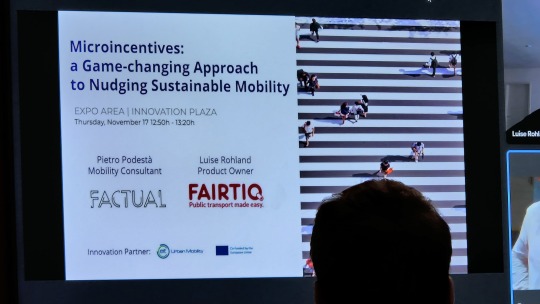
In this short pitch the argument went that the way public transport is run around the world means that it is subsidising everyone. Even those who can afford to pay and need to use it anyways. The keyword here was price-elasticity (my background in business economics suddenly came quite handy here).
A daily commuter or someone on a business trip will often use public transport and get paid for it, either by a business card or by a travel allowance. For these people, the price of public transport doesn't really matter. So if you would make public transport free or create a general lower-priced ticket like the German €9-ticket you wouldn't change mobility behaviour and all you really do is missing out on income. Because those who have a lower price elasticity, will travel anyways with public transport. The German ticket actually showed that most users who bought the ticket were already using public transport during the week and in the weekend it only caused more mobility by people who would otherwise not have made those journeys in the first place. It hardly replaced any car journeys.
Basically, they argued, if you want to get people into public transport you have to specifically target them. The most common known examples of these incentives are age-dependent offerings and off peak travel discounts. However, the COVID pandemic has already shifted the peaks to be spread out more. So off peak discounts are not that effective anymore.
To use micro-incentives it means you have to get the understanding of their behavioural choices. Which brings in the field of Behaviour Economics. Someone who is a commuter during the week has a lower price elasticity than when that same person is going on a leisure trip in the weekends. Therefor that same person has a different behavioural approach based on their travel motive and that is where you can make a difference in specifically targeting them. Another example is with people who occasionally use public transport. If someone has used public transport, but hasn't used the system for an undisclosed amount of days, you could sent that person a push notification or email in which you offer a discount for the next week if that person uses public transport again. It is a tactic which is broadly used in the world of shared mobility, but somehow the public transport world seems to be too conservative in this and is still stuck in the narrative of the necessity to serve all and target all.
Wrap up

These three days in Barcelona were very informative, interesting and gave plentiful new insights into the daily dilemmas we face in the mobility industry.
I really need to thank my employer (Municipality of Haarlemmermeer) for offering me this chance as this is not something we do too often (especially these congresses abroad).
By writing about what I have seen and heard during these three days, I hope I can inspire colleagues in the same way as I have been inspired during these three days.
There might not a solution to everything, but if you don't take the first step, there wont be any further steps to take how small or big they may be.
Adam Zuyderwijk BBE
Mobility Policy Advisor
Municipality of Haarlemmermeer (NL)
Some other pictures of the day:

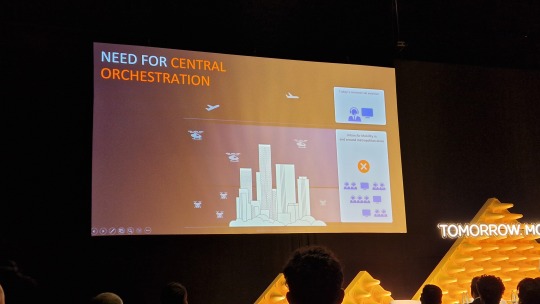
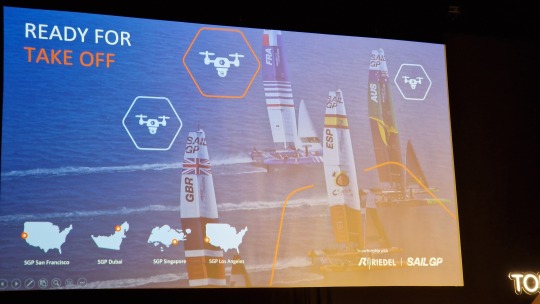
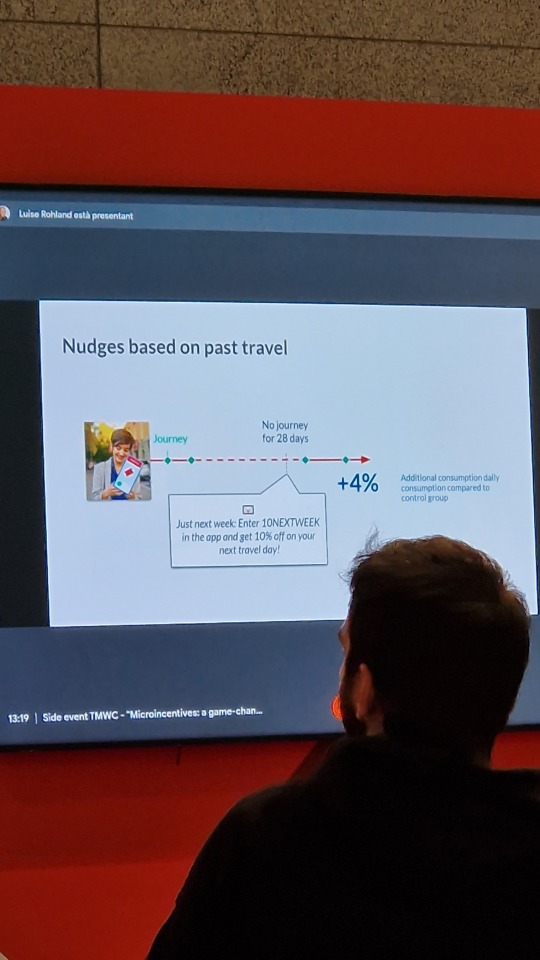

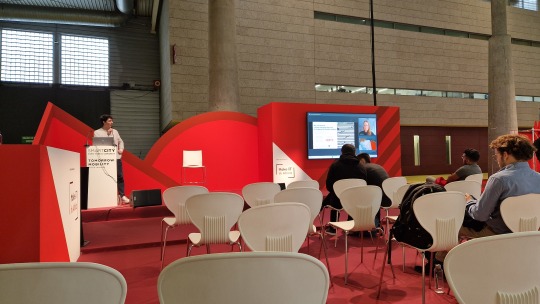


0 notes
Photo

A concept by @madhav_dua for Arrival Dezeen Future Mobility competition. - Do share your thoughts. - #niwwrd #arrival #dezeen #futuremobility #mobility #contest #mobilitydesign #tractors #electric #tractor #vehicledesign #transportation #design #ev #cardesignworld #cardesignmedia #hotroadnews #indian #indiandesign #designers #design https://www.instagram.com/p/Cf84MDyjVLw/?igshid=NGJjMDIxMWI=
#niwwrd#arrival#dezeen#futuremobility#mobility#contest#mobilitydesign#tractors#electric#tractor#vehicledesign#transportation#design#ev#cardesignworld#cardesignmedia#hotroadnews#indian#indiandesign#designers
0 notes